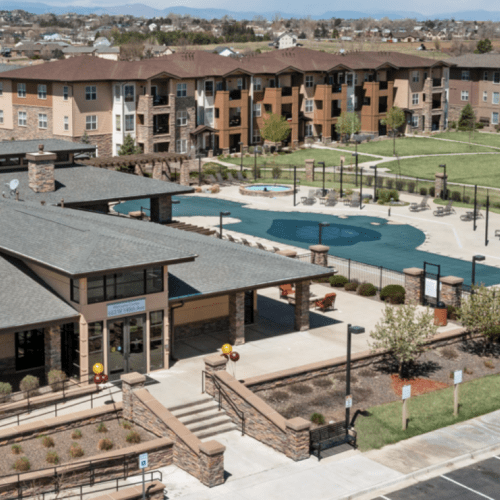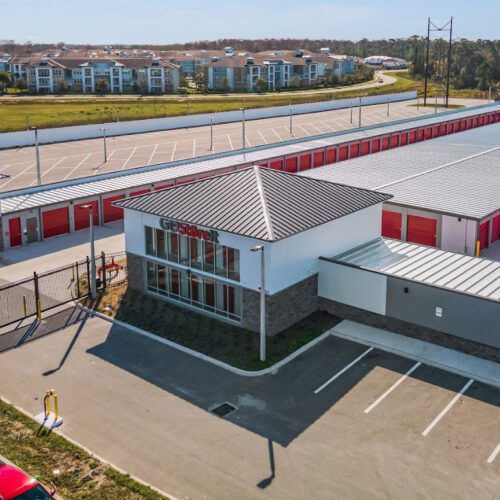Solutions for Your 1031 Exchange—Without the Hassle of Day-to-Day Management
View our curated list of 1031 exchange replacement properties
Featured Replacement Properties
1031 Exchange Eligible
Loan To Value: 43.70%
Minimum Investment: $50,000
506(c) Offering

1031 Exchange Eligible
Loan To Value: DEBT-FREE
Minimum Investment: $100,000
506(c) Offering

1031 Exchange Eligible
Loan To Value: DEBT-FREE
Minimum Investment: $100,000
506(c) Offering

1031 Exchange Eligible
Loan To Value: 50.52%
Minimum Investment: $100,000
506(c) Offering

1031 Exchange Eligible
Loan To Value: 64.60%
Minimum Investment: $100,000
506(c) Offering

Simplify Your 1031 Exchange with Perch Wealth's DST Solutions
Navigating a 1031 exchange can feel complicated, but finding the right replacement property doesn’t have to be. At Perch Wealth, we specialize in offering high-quality Delaware Statutory Trust (DST) properties, providing passive real estate investment opportunities tailored to your financial goals.
How We Make Your 1031 Exchange Seamless
Tailored Investment Solutions:
We connect you with premium DST properties that meet your investment criteria—helping you make an educated choice for your financial strategy.
A Simple, Efficient Process:
We help you identify the right properties and execute on your investment strategy so you can focus on what matters most: your wealth and future.
No Tenant Management, Just Peace of Mind:
DSTs offer all the benefits of real estate ownership—cash flow, diversification, tax advantages—without the need for day-to-day management. Spend less time dealing with tenants and more time with family or enjoying your life.
The Perch Path
Following a methodical 4-step process, we help our clients identify an investment strategy that aligns with their goals and objectives.
A FRESH AND INFORMED APPROACH
Our Services
The Perch Wealth team brings over 100 years of combined experience in real estate and financial services, offering expert guidance tailored to your investment needs.
1031 Exchange Solutions
We provide a variety of exclusive 1031 exchange investment options to help defer capital gains taxes.
DST Investments
We connect accredited investors with Delaware Statutory Trust (DST) investments nationwide, delivering a management-free approach to real estate investing.
Private Real Estate Funds
We offer access to leading interval and alternative funds for accredited investors in the United States.
Opportunity Zones
Start Your 1031 Exchange Journey Today
Ready to simplify your 1031 exchange and maximize your wealth potential with passive real estate? Reach out today to discover DST options for your portfolio.
Testimonials
What Are People Saying?
Marcia S., NJ
"A+ excellent service! Ben Carmona and his team are professional, personable, a pleasure to do business with. Ben's particular strength is in analyzing, evaluating, making recommendations for or against the investment opportunities. His explanations are clear, well researched and thought out, well communicated. The process is collaborative. You can't go wrong with Ben and his team at Perch."
Mary Lee K., WA
"Every person I spoke to was knowledgeable, a good communicator, not pushy, and had a can do attitude in dealing with issues that came up."
Rita H., CA
"Whether you are a seasoned investor or just starting out investing in DSTs, you will find the team at Perch Wealth the most professional, knowledge-based group out there. We are at the point in our lives where we are transitioning out of multi-family properties so that we can enjoy our retirement years and the Perch Wealth team has guided us every step of the way in making certain our investments into DSTs will provide the security and income desired for the future."
Lou W., MA
"Perch has been excellent in making proposals for DST investments and in listening and adjusting to my feedback on them. Their patience has been great as I have modified my own criteria as I have read their documents and proposals. The Perch team has been superb in making the paperwork easy."
Gary R., CA
“ I just want to say how very appreciative I am of Mr. Gersten for his commitment to providing guidance to investors with their real estate investments. My experience certainly suggests that real estate investors wanting work with a company where people are truly caring and helpful should consider Perch Wealth. ”
Marcia S., NJ
"A+ excellent service! Ben Carmona and his team are professional, personable, a pleasure to do business with. Ben's particular strength is in analyzing, evaluating, making recommendations for or against the investment opportunities. His explanations are clear, well researched and thought out, well communicated. The process is collaborative. You can't go wrong with Ben and his team at Perch."
Mary Lee K., WA
"Every person I spoke to was knowledgeable, a good communicator, not pushy, and had a can do attitude in dealing with issues that came up."
Rita H., CA
"Whether you are a seasoned investor or just starting out investing in DSTs, you will find the team at Perch Wealth the most professional, knowledge-based group out there. We are at the point in our lives where we are transitioning out of multi-family properties so that we can enjoy our retirement years and the Perch Wealth team has guided us every step of the way in making certain our investments into DSTs will provide the security and income desired for the future."
Lou W., MA
"Perch has been excellent in making proposals for DST investments and in listening and adjusting to my feedback on them. Their patience has been great as I have modified my own criteria as I have read their documents and proposals. The Perch team has been superb in making the paperwork easy."
Gary R., CA
“ I just want to say how very appreciative I am of Mr. Gersten for his commitment to providing guidance to investors with their real estate investments. My experience certainly suggests that real estate investors wanting work with a company where people are truly caring and helpful should consider Perch Wealth. ”





